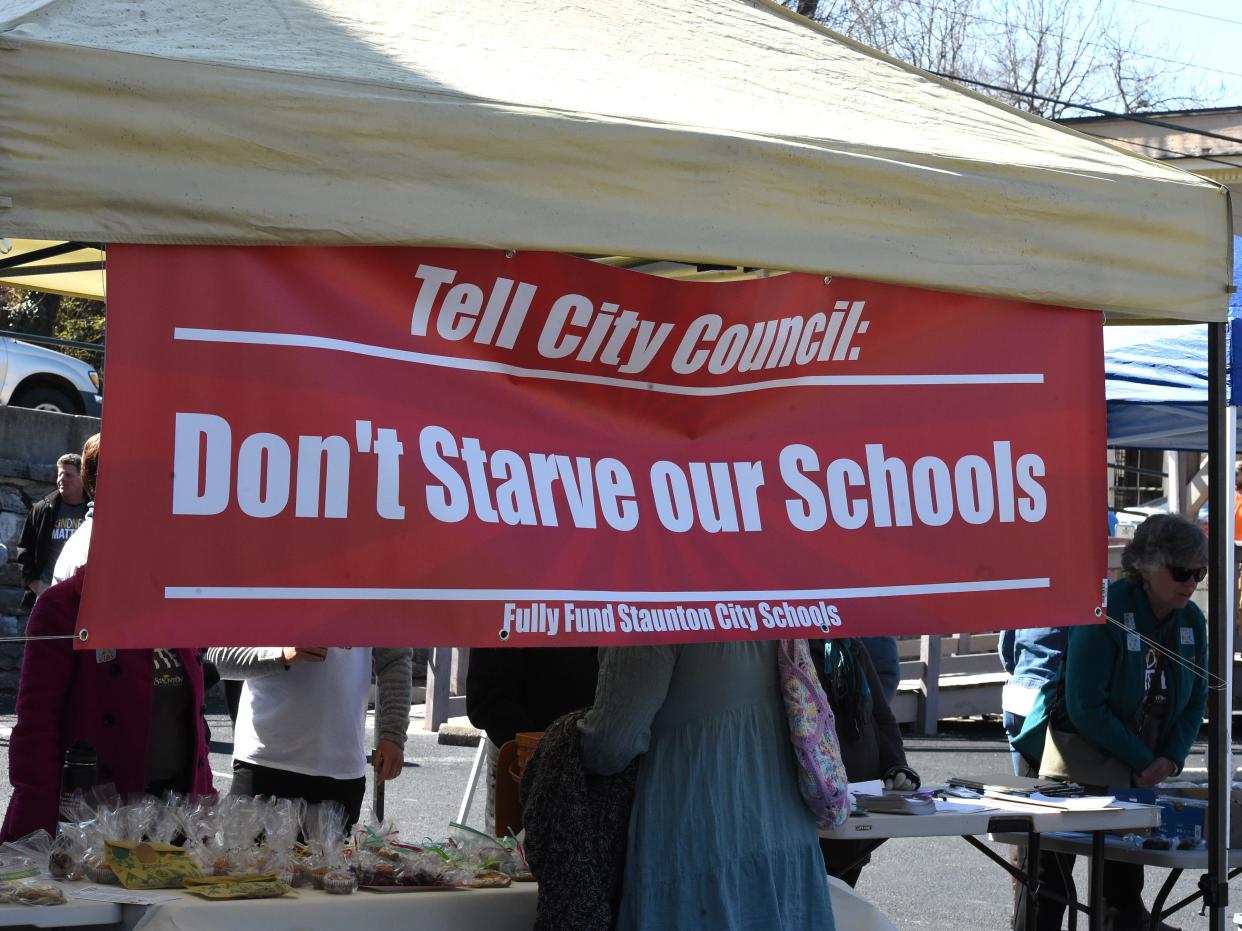Staunton superintendent hopes new report on lack of school funding leads to improvements

- Oops!Something went wrong.Please try again later.
STAUNTON — Virginia school divisions receive less funding per student for K-12 than the national or regional average. Compared to border states, Virginia falls behind Kentucky, Maryland and West Virginia when it comes to funding.
Those numbers come from a report released Monday by the Joint Legislative Audit and Review Commission (JLARC) which was directed to study the true cost of education in Virginia by the General Assembly in 2021.
Other findings included:
Many of the Standards of Quality (SOQ) formula’s inputs and assumptions lack a clear rationale and do not reflect prevailing practice in school divisions;
SOQ formula does not adequately account for higher needs students, regional labor costs, and division size (the three main cost drivers outside a division’s control);
Local composite index used to apportion funding obligations between the state and each locality is a reasonably accurate measure of ability to pay;
Most states use a student-based K–12 funding formula, which is simpler than Virginia’s complex staffing-based formula.
“To me, the findings from the report, they weren’t astounding to us as practitioners and school board members, but they were still astounding,” Staunton Schools Superintendent Garett Smith said Monday night at the monthly school board meeting. “We’ve been operating this way for so many years.”
Virginia’s funding level is 14% lower than the national average and 4% lower than the South Atlantic regional average, according to the report.
“We’ve been talking here in Staunton City Schools for several years about our concerns with teacher salaries and funding,” Smith said. “Obviously those things go together.”
Smith said that these state numbers show why he and others in the school division and on the board pushed back so vehemently in the spring of 2020 when Staunton City Council cut local appropriations to schools by $1.8 million.
Then, in the spring of 2022, council and the school board tangled again when council initially budgeted $600,000 less than schools requested.
With state money already lacking, Smith said the burden of funding schools falls to the localities.
“It was so urgent at the time to move that forward and stand up for ourselves,” Smith said. “We couldn’t afford to function like that.”
The budget we passed last year was the largest education budget in history, including a 10 percent pay raise for our teachers. Today’s JLARC report lays plain that the previous two administrations failed to provide adequate funding in K-12 education…(1/4)https://t.co/h4qjlY4B00
— Governor Glenn Youngkin (@GovernorVA) July 10, 2023
Smith also pointed out that the formula the state uses for staffing ratios does not reflect prevailing practices. That formula severely underestimates the number of staff needed for schools to operate, school officials said. Virginia schools as a whole employ 51% more staff than what the formula indicates is needed, with additional funding falling on localities.
“As anyone knows who is familiar with working in schools, that’s a preposterous notion,” Smith said. “Yet we operate under these parameters year after year.”
The report said that the SOQ formula calculated Virginia’s school divisions needed $10.7 billion but schools actually spent $17.3 billion.
And it said the state uses a complex staffing-based funding formula that is “unusual and creates a variety of issues for policymakers and school divisions.”
Among its recommendations, the committee suggested that Virginia either partially replace the formula by using student-based calculations for special education and English learner funding or fully replace the entire staffing-based formula with a new student-based formula.
As Virginia awaits a budget to be passed, Smith is hopeful that this report will show legislatures the importance of funding education. He’s also hopeful that the General Assembly will consider one specific suggestion in the report that he feels is of vital importance — removing the support cap.
In 2009, during the Great Recession, Virginia lawmakers created the cap on support staff funding for schools. That has meant fewer support staff in schools and, for the staff that is there, a greater burden on the locality to pay for them.
The report on Monday called to eliminate the support cap and “re-instate the nonpersonal cost categories removed in FY09 and FY10.”
The report has already turned into a political battle in Virginia with each party blaming the other for the problems JLARC revealed.
“Our public schools are woefully underfunded and understaffed,” said Portsmouth Democrat Don Scott. “It is our children who are suffering because extremists in the Virginia GOP would rather fund corporate giveaways than their education.”
Republican Gov. Glenn Youngkin placed blame on his predecessors, Democrats Ralph Northam and Terry McAuliffe, calling the report a wake-up call.
“Today’s JLARC report lays plain that the previous two administrations failed to provide adequate funding in K-12 education,” Youngkin wrote in a Tweet Monday. “And more importantly, never sought to reform the system to ensure that funding supports students and teachers in the classroom.”
More: Closed session antics, including secret recordings, happen across the state
More: Augusta County finally has new animal ordinance on the table. What does it look like? THE AGENDA
— Patrick Hite is a reporter at The News Leader. Story ideas and tips always welcome. Contact Patrick (he/him/his) at phite@newsleader.com and follow him on Twitter @Patrick_Hite. Subscribe to us at newsleader.com.
This article originally appeared on Staunton News Leader: Staunton superintendent hopes report on lack of school funding leads to improvements

